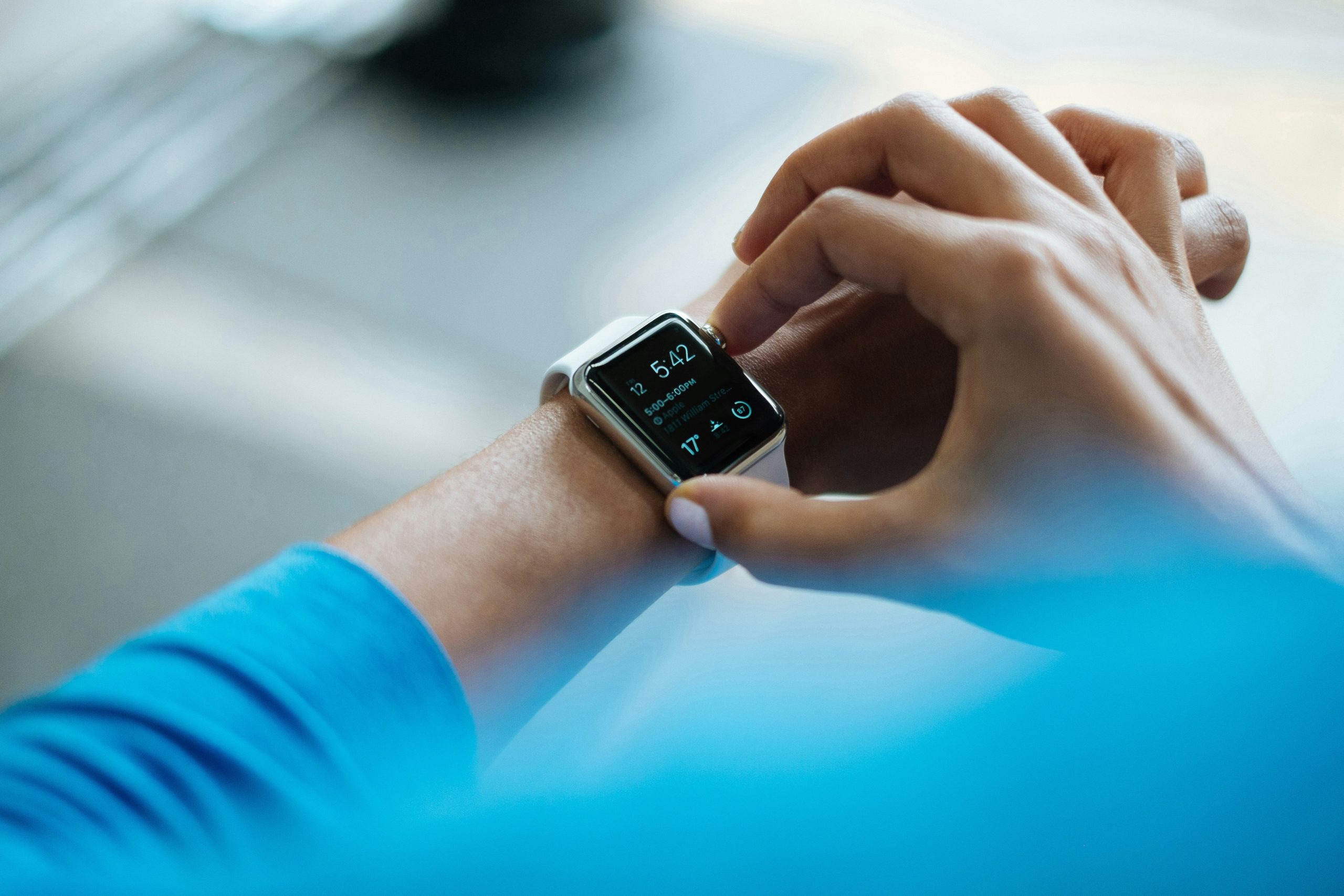Introduction: The Rise of Wearable Health Technology
In recent years, wearable health devices have become an integral part of modern healthcare. From fitness trackers to advanced medical-grade wearables, these tools are empowering individuals to monitor their health in real-time. The rise of preventive care—a proactive approach to avoiding diseases before they occur—is being driven by advancements in these devices.
Wearables are more than just gadgets; they bridge the gap between patients and healthcare providers, offering critical health insights to improve outcomes. When paired with other technological advancements, such as Medical AI Scribes and telemedicine platforms, wearables play a key role in streamlining healthcare workflows and promoting healthier lifestyles.
What Are Wearable Health Devices?
Wearable health devices are smart tools worn on the body to monitor and collect health data. These include:
- Fitness Trackers (e.g., Fitbit, Garmin): Track steps, heart rate, sleep, and calorie burn.
- Smartwatches (e.g., Apple Watch, Samsung Galaxy Watch): Offer advanced health monitoring such as ECG and blood oxygen levels.
- Medical Wearables (e.g., glucose monitors, ECG patches): Provide clinical-grade data for chronic disease management.
By capturing data such as heart rate, blood pressure, glucose levels, and even oxygen saturation, these devices allow individuals to monitor their health continuously—enabling preventive care to become more personalized and effective.
The Role of Wearables in Preventive Care
- Early Detection of Health Issues
One of the biggest advantages of wearable devices is their ability to detect early warning signs. For example:
- Smartwatches with heart rate sensors can detect irregular heart rhythms like atrial fibrillation (AFib), prompting early intervention.
- Continuous glucose monitors (CGMs) help individuals with diabetes manage their condition and identify spikes or dips before they become dangerous.
With real-time data, doctors can intervene early, potentially preventing chronic diseases or complications.
- Promoting Healthy Lifestyle Changes
Wearables empower individuals to take control of their health by:
- Encouraging physical activity through step-counting and fitness goals.
- Tracking sleep patterns and identifying poor sleep habits.
- Monitoring stress levels via heart rate variability (HRV).
The ability to visualize their health metrics motivates users to make better lifestyle decisions, such as exercising more, eating healthier, or improving sleep hygiene.
- Chronic Disease Management
For people with chronic conditions like diabetes, hypertension, or heart disease, wearable health devices play a critical role in ongoing management:
- Blood pressure monitors help individuals track their hypertension and share insights with their providers.
- Medical-grade ECG wearables help monitor heart health and send alerts for abnormalities.
Combined with tools like a Medical AI Scribe, physicians can analyze this wearable data more efficiently. A Medical AI Scribe automates note-taking during consultations, allowing doctors to focus on interpreting the data and discussing preventive strategies with patients.
Wearables and Data-Driven Preventive Care
Real-Time Data and Analytics
The continuous stream of real-time data from wearables creates opportunities for proactive care. By tracking metrics such as activity, sleep, and heart rate, wearables generate actionable insights that healthcare professionals can use to tailor preventive plans.
For example, a person whose wearable data shows persistently elevated blood pressure could be flagged for immediate intervention, reducing their risk of stroke or cardiovascular disease.
Improved Patient-Physician Collaboration
When wearable data is shared with healthcare providers, it strengthens collaboration:
- Patients gain a better understanding of their health.
- Doctors receive comprehensive data beyond what’s typically captured during office visits.
By integrating wearable data into Electronic Health Records (EHR) and analyzing it with tools like Medical AI Scribes, physicians can focus on patient education and decision-making instead of manually sifting through vast datasets.
The Impact of Medical AI Scribes and Wearable Data Integration
The growing influx of health data from wearables poses a challenge for healthcare providers. Manually analyzing vast datasets during consultations is time-consuming and reduces the time physicians can spend with patients. This is where tools like AI Medical Scribe come into play.
What is a Medical AI Scribe?
A Medical AI Scribe is a technology-driven solution that automates documentation, summarizing patient interactions, wearable data, and clinical notes seamlessly into the patient’s EHR.
How It Works with Wearables:
- Wearable data is collected and shared with healthcare providers in real time.
- A Medical AI Scribe processes this data, generating concise summaries and insights for doctors.
- Physicians can quickly review the key findings, enabling faster decision-making and preventive care planning.
This integration enhances efficiency, reduces administrative burdens, and allows doctors to focus on improving patient care outcomes.
Success Stories: Wearables Improving Preventive Care
Case Study 1: Heart Health Monitoring
A 56-year-old patient was alerted by their smartwatch to irregular heart rhythms. By visiting a cardiologist promptly, the patient was diagnosed with atrial fibrillation early. With preventive medication and monitoring, the patient avoided a potential stroke.
Case Study 2: Diabetes Management
Using a continuous glucose monitor (CGM), a 42-year-old patient identified which meals spiked their blood sugar levels. With data-driven diet modifications and input from their doctor—supported by Medical AI Scribe tools—the patient managed to bring their HbA1c down significantly within months.
Case Study 3: Improved Physician Workflows
In a large hospital setting, physicians used a Medical AI Scribe alongside wearable data integration to streamline chronic disease management for hundreds of patients. Doctors reported improved efficiency and higher-quality consultations since they no longer had to manually analyze wearable data.
Challenges and Limitations of Wearable Devices
While wearable health devices offer significant benefits, there are challenges:
- Data Accuracy: Not all devices provide clinical-grade accuracy. Users must rely on validated, FDA-approved wearables for medical purposes.
- Data Privacy Concerns: Sharing health data raises concerns about security and privacy. Stricter data encryption and compliance (e.g., HIPAA) are essential.
- Device Adoption Barriers: High costs and lack of awareness limit the adoption of wearable devices in some populations.
- Overload of Data for Providers: Without tools like a Medical AI Scribe, physicians may struggle to process large volumes of wearable-generated data efficiently.
Despite these challenges, advancements in wearable technology and complementary tools like AI-driven scribes are addressing these issues and improving overall healthcare delivery.
The Future of Wearable Health Devices
The future of wearable technology is promising, with innovations focusing on:
- Advanced Sensors: New sensors capable of tracking blood biomarkers, hydration levels, and early disease markers.
- AI-Powered Insights: Machine learning algorithms will offer predictive analytics for preventing diseases before symptoms appear.
- Seamless Integration with EHRs: Tools like Medical AI Scribes will further integrate wearable data into clinical workflows.
Wearables will continue to evolve, becoming even more integral to preventive care and chronic disease management. By empowering individuals with actionable health insights and supporting physicians with AI tools, wearables are set to transform healthcare delivery.
Conclusion: Shaping a Healthier Future with Wearables
Wearable health devices are revolutionizing preventive care by offering real-time insights, promoting healthy lifestyle changes, and enabling early disease detection. As these devices become smarter and more accessible, they are shifting the focus of healthcare from reactive to proactive.
The integration of technologies like Medical AI Scribes ensures that wearable data is used effectively without overwhelming healthcare providers. Together, these advancements empower both patients and doctors to work toward better health outcomes, ultimately shaping a healthier and more efficient future for everyone.


